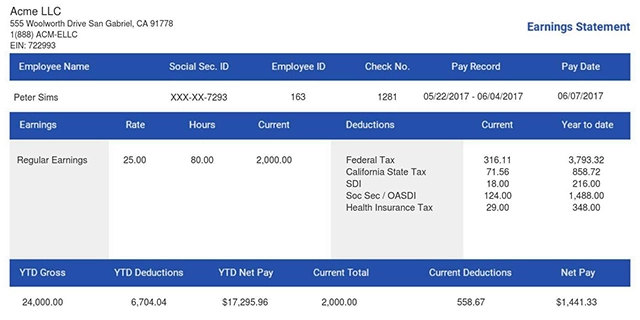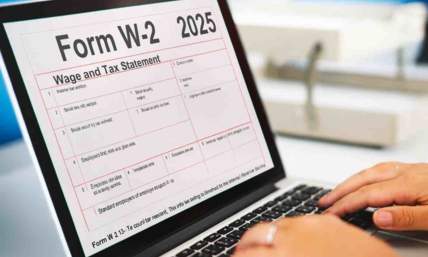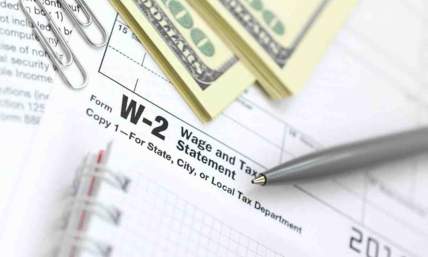Profit and Loss Statement: Definition, Types and Examples
A profit and loss statement is a document that shows the breakdown of a company’s revenue. It's also known as an income statement. It shows whether or not a business earned money within a specific period.
A profit and loss statement breaks down the total earnings, costs, and operating expenses to determine the net profit or net loss. To align payroll records with financial data, companies can use a pay stub template for accurate documentation.
In this article, we will dive into what a profit and loss statement is as a financial document, and the difference between net profit and net loss. You’ll get practical steps to calculate net profit in cash flow statement reports.
- What Is a Profit and Loss Statement?
- How Does a Profit & Loss Statement Work on a Balance Sheet?
- Types of Profit and Loss Statements
- Profit and Loss Statements: Cash Method vs Accrual Method
- Components of a Profit and Loss Statement
- How To Calculate Net Profit on Profit and Loss Statements
- Profit and Loss Statement Examples
- Final Thoughts
What Is a Profit and Loss Statement?
A profit and loss statement or income statement is a summary of a company’s revenue, total expenses, and profit or loss over a period. It is a key indicator of a company's financial performance in a specific period. Profit and loss statements provide a clear view of total revenue, gross profit, and net income.
Why Is It Important?
Managers, lenders, and investors all use profit and loss statements to evaluate a company’s profitability. It helps to compare the same period results with those of previous periods.
-
A profit and loss statement is the fastest way to see whether your business is profitable during a given reporting period.
-
Managers use profit and loss statements to judge how total revenue converts into gross profit.
-
It determines the financial performance of a company after deducting operating expenses.
-
Lenders, investors, and tax authorities look out for clean income statements. It's important when evaluating a company’s creditworthiness.
-
Many investors require accurate profit and loss statements to review financing applications.
-
It can be used to calculate and prepare profit and loss statements monthly
-
Small businesses use profit and loss statements to predict potential net loss or net profit.
-
A company profit and loss statement helps highlight the margin pressure, interest expenses, and legal fees.
-
The income statement can analyze operational expenses that could affect cash flow.
Without P&L statements, it's difficult to determine whether sales revenue is actually improving a company's net earnings. P&L statements are very important when assessing the financial strength and profitability of a company at a specific point in time. They provide valuable insights into the company’s financial position and overall business performance for external stakeholders.
How Does a Profit & Loss Statement Work on a Balance Sheet?
Profit and loss statements (or income statements) are a detailed record of the company’s revenues and total expenses incurred. These include non-operating expenses, direct expenses, and other expenses in the same period.
It produces a single summary number, which is the net income or net loss. Profit and loss statements start off with sales revenue or gross revenue:
-
First, you subtract the cost of goods sold (COGS) to get your gross profit.
-
Next, subtract operating expenses to get your operating income.
-
Then add or subtract non-operating items. These include interest income, interest expense, and income tax expenses.
What you get is the company’s net profit or net loss for that period.
How Does a Cash Flow Statement Work for Businesses?
A cash flow statement helps businesses track how money moves in and out of the company during a specific period. While a profit & loss statement measures profitability, the cash flow statement shows the actual flow of cash used for operations, investments, and financing.
Finance teams often reconcile the P&L statement, balance sheet, and cash flow statement. They do this to ensure that reported profits align with real cash movements and changes in assets and liabilities. Accounting software now automates much of this process. It turns raw sales, payroll data, expenses, and paystubs into formatted profit and loss statements that managers can easily review and analyze.
Types of Profit and Loss Statements
Profit and loss statements are of three common types/formats. Each of them is designed to suit specific needs:
-
Single-step profit and loss statement: The total revenue is listed in one group. All business expenses are also totaled in another group. The difference between the two is the net profit or net loss. It's a straightforward report perfect for a quick glance at a company’s financial health.
-
Multi-step income statement: This type of income statement shows details about a company’s financial health. It includes the subtotals: gross profit, operating income or operating profit, and pre-tax net revenue. It's ideal to analyze the company’s ability to make a profit. You can compute the key margins, such as gross profit margin and net profit margin.
-
Condensed P&L statements: Condensed P&L statements are a summary of key categories in an income statement. It expresses every line as a percentage of total revenue. It's commonly used for benchmarking the financial performance of different companies in a fiscal year.
Some organizations use loss statement templates to compare results across the same period. Whether you use the cash method or the accrual method of accounting will also affect how revenues and cost of goods sold (COGS) appear. Choose the format and method that match your business size, reporting needs, and compliance requirements.
Profit and Loss Statements: Cash Method vs Accrual Method
There are two main ways to prepare profit and loss financial statements. They are:
-
The cash method
-
The accrual method.
The cash method is mainly focused on revenue and expenses, where there is a cash exchange. The accrual method, on the other hand, records revenue when earned and expenses incurred regardless of cash timing.
Most public companies use the accrual method under Generally Accepted Accounting Principles (GAAP). This choice largely impacts free profit and cash flow.
Components of a Profit and Loss Statement
There are key components of a profit and loss statement that align with key accounting principles. These components vary but can also be custom-designed to fit a company’s ability.
The details on an income statement may vary based on a company’s assets and objectives. However, some components are consistent across the board, especially in publicly traded companies.
Revenue
The details of the company’s revenues in a fiscal year are a critical part of P&L statements. It shows all channels through which a company uses to generate revenue. The company’s revenues come primarily from services and goods sold.
A very detailed profit and loss statement would also show various deductions. You can check this by subtracting expenses for a reporting period. These deductions would be used to determine net income and net profit margin. They may also segment the company’s revenue based on product, service, or cost of goods sold.
Cost of goods sold (COGS)
The cost of goods sold (or services) includes all production costs the company incurs to provide its goods or services. These costs are obtained when you subtract operating expenses from total expenses incurred. Labor costs and other production-related costs are also factored into this category.
Gross profit
The gross profit is a key component of an income statement. You can also find it in other financial statements, sometimes as “gross income”. It's calculated using the values from your cost of goods sold and total revenue. Subtracting the cost of goods sold from the revenue would determine how much profit a company makes.
It reveals a business’s ability to make financial gains with long-term profitability. An increase in gross profit from previous periods to date shows it has enough cash flow. This shows it can cover its operational expenses and protect the company’s assets.
Operating expenses
The operating expenses in P&L statements show the costs required to run a business outside of production. It means these costs are not related to the expenses of producing goods and services. They cover rent, salaries, utilities, marketing, and other related costs.
Operating income: Earnings before interest and taxes (EBIT)
The operating income is also known as Earnings before interest and taxes (EBIT). It's the operating profit you get when you remove all operating expenses from your gross profit.
This figure is very important in cash flow calculations and projections. It's a core part of income statements showing profitability from a business’s operations.
Non-operating expenses
Non-operational expenses refer to the additional expenses outside of a company’s core operations. These include interest-related payments and restructuring costs.
It comes in handy to calculate interest payments, business debts, and some lawsuit settlements. Over time, non-operational expenses add up and ultimately affect a company’s profit.
Earnings before taxes (EBT)
This is the figure you get after all tax-related expenses have been taken out from your operating income earnings before interest and taxes. It includes income tax expenses and is mostly used as a comparison for the performance of businesses within the same grouping.
Net income
The net income or net profit is usually the concluding part of the P&L statements. It's an important calculation done after taxes have been taken out of the gross income.
To calculate net profit, in a financial report, make all tax deductions from the gross profit. This part is the most critical component for investors.
Earnings per share (EPS)
This is the final calculation in P&L statements and is usually common with public companies. It's derived by dividing the net income by outstanding shares. It helps investors know whether or not they will invest in a company.
Keep in mind that interest expense and interest income are part of P&L statements and affect net earnings. When interest costs rise, interest payments and interest expense reduce overall profit. If the business has high business debt, interest expense becomes a key line item.
How To Calculate Net Profit on Profit and Loss Statements
To calculate net profit:
-
Start with total revenue or net sales.
-
Subtract the cost of goods sold to get gross profit.
-
Subtract operating expenses to get operating profit.
-
Add non-operating income, subtract interest expense, then subtract income tax expenses.
-
If positive, then it is net profit. If negative, then it is a net loss.
Net profit margin = (Net profit ÷ Total revenue) × 100.
A high net profit margin shows efficient conversion of revenue into profit. Analysts compare net profit margin across previous periods to measure the profitability.
Profit and Loss Statement Examples

These profit and loss statement examples show how the bottom line changes.
Financial Statements for Aurora Dynamics
Figures are USD millions.
For the Years Ended December 31, 2024 and 2023
| Item | 2024 | 2023 |
| Sales and revenues | ||
| Product Sales. Industrial Systems | 28,430 | 26,910 |
| Services and Maintenance | 4,120 | 3,780 |
| Software Subscriptions | 1,650 | 1,210 |
| Total sales and revenues | 34,200 | 31,900 |
| Operating costs | ||
| Cost of goods sold | 15,480 | 14,600 |
| Selling, general & administrative expenses | 6,320 | 5,900 |
| Research & development expenses | 1,900 | 1,650 |
| Field service and warranty costs | 720 | 640 |
| Other operating (income) or expenses | 110 | (45) |
| Total operating costs | 24,530 | 22,745 |
| Operating profit | 9,670 | 9,155 |
| Interest expense (net) | 210 | 195 |
| Other non-operating income (expense) | (55) | 12 |
| Profit before taxes | 9,405 | 8,972 |
| Provision for income taxes | 2,140 | 2,040 |
| Net profit (net income) | 7,265 | 6,932 |
| Earnings per share. basic ($) | 1.87 | 1.77 |
| Dividends per share ($) | 0.40 | 0.36 |
Luna’s Vinyl Shop: Single-Step Profit and Loss Statement
For the Year Ended December 31, 2024
| REVENUES AND GAINS | Amount ($) |
| Retail Sales: Records & Accessories | 185,000 |
| Online Sales | 45,000 |
| Event Sales (pop-ups) | 10,000 |
| Total Revenues and Gains | 240,000 |
| EXPENSES | Amount ($) |
| Cost of Goods Sold (purchased inventory) | 92,000 |
| Rent | 24,000 |
| Wages | 46,000 |
| Utilities & Internet | 4,800 |
| Marketing & Events | 6,000 |
| Insurance | 2,200 |
| Depreciation | 1,000 |
| Bank & Processing Fees | 1,500 |
| Total Expenses | 177,500 |
| NET PROFIT | 62,500 |
Luna’s Vinyl Shop: Multi-Step Profit & Loss (example)
For the Year Ended December 31, 2024
| Item | Amount ($) |
| Sales (Gross Revenue) | 240,000 |
| Less: Returns & Allowances | (2,000) |
| Net Sales (Total Revenue) | 238,000 |
| Cost of Goods Sold (COGS) | (92,000) |
| Gross Profit | 146,000 |
| Operating Expenses | |
| Wages (store & online support) | 46,000 |
| Rent & Occupancy | 24,000 |
| Marketing & Events | 6,000 |
| Utilities and Supplies | 4,800 |
| Depreciation | 1,000 |
| Insurance & Licenses | 2,200 |
| Total Operating Expenses | 84,000 |
| Operating Income (Operating Profit / EBIT) | 62,000 |
| Other Income / (Expense) | |
| Interest income | 300 |
| Interest expense | (600) |
| Total Other (Net) | (300) |
| Earnings Before Taxes (EBT) | 61,700 |
| Income tax expense (estimate) | (15,425) |
| Net Income (Net Profit) | 46,275 |
Luna’s Vinyl Shop: Condensed P&L statements (example)
For the Year Ended December 31, 2024
| Item | Amount ($) |
| Net Sales (Total revenue) | 238,000 |
| Cost of Goods Sold | (92,000) |
| Gross Profit | 146,000 |
| Operating Expenses (total) | (84,000) |
| Operating Income | 62,000 |
| Net Other Income | (300) |
| Earnings Before Tax | 61,700 |
| Income Tax Expense | (15,425) |
| Net Income | 46,275 |
This example of a profit and loss statement outlines the core differences. Especially when you manage business expenses, interest payments, or income tax expenses.
Final Thoughts
A well-built profit and loss statement gives more than a single-number verdict. It shows where revenue came from, how the operating profit affected margins, and total net income. When paired with a balance sheet and cash flow statement, it serves as a solid indicator of a company’s financial performance.
If you manage payroll or run a small business, accurate pay records make a big difference on your P&L statements. Consistent payroll documentation ensures that wages and labor costs are properly recorded as operating expenses. Using a paycheck stub generator to create organized pay stubs can simplify payroll tracking. This can also improve reconciliation between payroll reports and financial statements.















